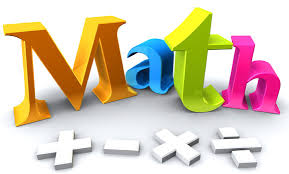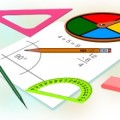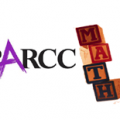As an elementary teacher or as the parent of an elementary student, you are most likely well aware of the demands that are being placed on young learners when it comes to standardized testing; not only will the students be asked to demonstrate their literary acumen through the ELA tests (see Smarter Balanced Sample Questions: ELA, Grades 3-5 and Smarter Balanced Sample Questions: ELA, Grades 6-8 for more details ) but they will also be assessed on their mathematical abilities.
Below you will find several sample Smarter Balanced questions that(at www.smarterbalanced.org) has released on its website, along with an explanation of each question:
(Note: the targeted grade level is indicated after each sample question number.)
Question #1 (5th grade):
Five swimmers compete in the 50-meter race. The finish time for each swimmer is shown in the video. (Times are: 23.42, 23.18, 23.21, 23.35, and 23.24).
Explain how the results of the race would change if the race used a clock that rounded to the nearest tenth.
Explanation: Here, students must know the difference between rounding to the nearest hundredth and tenth – and how that would change the times. They will need to use their rounding skills and then explain that some of the times will appear to be a “tie”, as opposed to the times that have been rounded to the nearest hundredth (in which it is clear who finished first, second, third, etc.).
Question #2 (3rd grade):
Look at point P on the number line.

Look at number lines A – E. Is the point on each number line equal to the number shown by P? Choose Yes or No.
Explanation: Students will need to first identify where point P falls on the first number line, and then they will need to look at five other number lines (“Number lines A-E”) to determine which ones are equal to point P. These number lines are divided into twelfths, sixths, fifths, thirds, and fourths – so students will need to have a strong grasp of equivalent fractions. Additionally, this question requires that students “understand that fractions are numbers, not just pizzas and pies … a shift in the standards” (from sampleitems.smarterbalanced.org). Also, note that this question differs from traditional multiple choice questions in that more than one answer is possible from the list of options provided.
Question #3 (4th grade):
Jared is testing how much weight a bag can hold. He plans to put juice bottles into three bags. He wants each bag to have a total weight within the given range.
• Drag juice bottles into each bag so that the weight is within the given range.
• Leave the bag empty if the given range is not possible using juice bottles.
(Students are then shown a bottle labeled: “3 5/8 lb.” Next to this bottle, there are three bags with the following labels beneath each one: “Between 6 lb. and 7 lb.”, “Between 10 lb. and 11 lb.”, And “Between 14 lb. And 15 lb.”)
Explanation: This question clearly requires the student to employ knowledge of fractions, addition/multiplication of fractions, and number sense when deciding if a certain number of juice bottles falls within the given ranges (of consecutive whole numbers).
Question #5 (4th grade):
Five friends ordered 3 large sandwiches.
James ate ![]() of a sandwich.
of a sandwich.
Katya ate ![]() of a sandwich.
of a sandwich.
Ramon ate ![]() of a sandwich.
of a sandwich.
Sienna ate ![]() of a sandwich.
of a sandwich.
How much sandwich is left for Oscar?
(Students are provided with an on-line calculator when solving this problem.)
Explanation: This question demands that students “understand that each sandwich in this problem represents the same whole, and therefore operations with fractions can be used in solving this problem” (sampleitems.smarterbalanced.org).
Also note…
In addition to the various fraction and decimal problems, there are also sample questions on Smarter Balanced’s website that require students to access their knowledge of perimeter, factoring, divisibility and division concepts.
Conclusions and Recommendations:
If you look at the Common Core standards for grades 3-5, you will see that the test designers have taken into account the major emphases of the Core instructional objectives, namely:
• At Grade 3: an emphasis on multiplication, division, fractions, arrays, and an understanding of two-dimensional shapes.
• At Grade 4: multi-digit multiplication and division, more complex fraction work (equivalents, addition/subtraction/multiplication of fractions), and geometry concepts.
• At Grade 5: more sophisticated fractional concepts (including division of fractions), division with 2-digit divisors and decimals, and an understanding of volume.
Clearly, a curriculum that aligns with the Common Core will help you prepare your students for the test’s concepts. And when it comes to understanding the finer points of taking the test in the on-line format, feel free to visit their website So that students can take sample tests. Here, they can practice working with the online tools, such as the calculator, dragging and dropping on the screen, etc.





